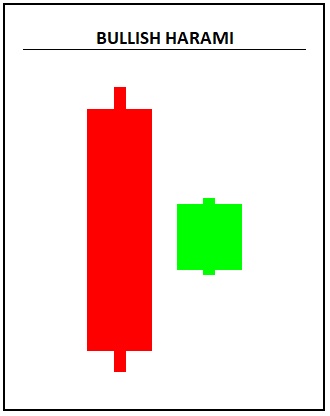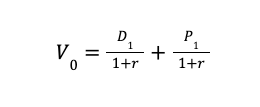Stock Market Fluctuations Explained
The stock market can go up or down based on a number of different factors, including consumer confidence, worries about inflation, and supply and demand. As an investor, it’s important to understand market fluctuation and how it works, and to know how much fluctuation is normal.
Why do stocks fluctuate? Read on to learn more about market volatility and stock fluctuation.
4 Top Causes of Stock Market Fluctuations
The stock market fluctuation definition is when stock prices rise or fall. So what causes this? The stock market can move up and down due to a variety of factors, including:
Supply and Demand
The prices of stocks depend on supply and demand. Supply is how much of a good — in this case, a share of stock — is available for sale. Demand is how much consumers want to buy that stock. Prices rise when the supply of shares of stock for sale is not enough to meet investors’ demands. When investors demand for shares falls, so does the price of the shares.
Overall, the stock market fluctuates because investors are buying and selling stocks in such a way, and in such volume, that stock prices make a large move in one direction or another.
Inflation
Concerns about inflation may cause investors to become bearish and stop buying stocks, which may make the market go down. That’s because during periods of inflation, consumer spending tends to slow, and corporate profits may suffer. Inflation can inject uncertainty and volatility into the market.
Economic Indicators
Economic indicators are data that analysts use to help judge the health of the economy. These indicators can, in turn, affect stock market fluctuation. They typically include such things as the Consumer Price Index, unemployment numbers, interest rates, and home sales. If prices, interest rates, and unemployment rise, chances are good that there may be stock fluctuation.
Company Performance
How well a company is doing can affect the price of its stock and potentially cause market fluctuations. If the company is expanding its operations and reporting a profit, for instance, investors’ demand for the stock may rise, along with the price of the stock. Conversely, if there are concerns about the company’s financial health, or it reports a loss, demand for the stock may drop, and so generally will the price.
Pros and Cons of Market Fluctuations
There are benefits and drawbacks to market fluctuations. These are some of the advantages and disadvantages to consider when the market becomes volatile.
|
Market Fluctuations |
|
|---|---|
| Pros | Cons |
| May be able to purchase stocks at lower prices | Could lose money by selling stocks at a loss |
| Opportunity to diversify assets | Risk of falling prey to financial scams may be greater |
Pros of Market Fluctuations
• Chance to purchase shares at lower prices. When stock prices go down, it may be a good opportunity for investors to buy shares for less. Investing in a down market could be beneficial.
• Incentive to diversify your assets. When the market is volatile, it’s a prime time to look over your asset allocation and make any prudent changes. For instance, you may want to reduce some of your holdings in riskier assets and move them over to safer investments in case the market drops.
Cons of Market Fluctuations
• Might end up selling stocks at a loss. Instead of panicking, selling your shares, and losing money, you may be better off waiting out the fluctuations if you can. When the market goes back up, you may be able to recoup what you paid for the stock.
• There may be a greater risk of financial scams. During a time of market volatility you may receive offers that advertise risk-free returns on certain investments. Be alert to possible fraud, and don’t let your emotions get the better of you, or you could lose money.
💡 Quick Tip: Before opening any investment account, consider what level of risk you are comfortable with. If you’re not sure, start with more conservative investments, and then adjust your portfolio as you learn more.
Volatility Means the Stock Market Is Working
Although it’s difficult to watch the value of your portfolio drop, stock market volatility is a normal part of stock market investing. In fact, volatility is natural, and it shows that the stock market is working as it should.
Here’s why: The more investors weigh in — by actively buying and selling stocks — the more accurate the prices of stocks will ultimately be. Essentially, it’s a weighing of information about the “correct” price of a stock from many different investors.
It’s also helpful to remember that volatility doesn’t just relate to rising stock prices — it also refers to plummeting stock prices. When the stock market makes a surge upward, that is also considered stock market fluctuation.
What Is a Normal Amount of Stock Market Fluctuation?
This is a notoriously hard question to answer because really, almost any amount of market fluctuation is possible.
The best guide for understanding what is normal (and what is not) is to look at what has happened in the past. While past performance is never a guarantee of future financial success, it’s helpful to look at the data.
The most commonly cited pool of data is the S&P 500. The S&P 500 can give a good historical gauge of stock market movement.
Since World War II — the “modern” stock market era, the S&P 500 has seen 12 drops in the stock market of over 20%.
| Peak (Start) | Return |
|---|---|
| May 29, 1946 | -30% |
| August 2, 1956 | -22% |
| December 12, 1961 | -28% |
| February 9, 1966 | -22% |
| November 29, 1968 | -36% |
| January 11, 1973 | -48% |
| November 28, 1980 | -27% |
| August 25, 1987 | -34% |
| July 16, 1990 | -20% |
| March 27, 2000 | -49% |
| October 9, 2007 | -57% |
| February 19, 2020 | 33.93% |
You’ll notice that a big drop in the stock market happens somewhat regularly. And smaller fluctuations of 5% or 10% down happen much more frequently than that.
💡 Quick Tip: When you’re actively investing in stocks, it’s important to ask what types of fees you might have to pay. For example, brokers may charge a flat fee for trading stocks, or require some commission for every trade. Taking the time to manage investment costs can be beneficial over the long term.
What Does Stock Market Volatility Mean to You As an Investor?
How you deal with volatility as an investor depends on your tolerance for risk. What to know about risk is that if you can’t afford losses, volatility could be a time of fear and uncertainty for you. But if you have a higher tolerance for risk, you may see volatility as a potential opportunity.
Risk Tolerance in Investing
Risk tolerance is the amount of risk you’re willing to take with investments. Volatility in the market could directly affect your risk tolerance. For instance, if you have a higher risk tolerance, you may be willing to risk money for the possibility of high returns. If you have a lower risk tolerance, you’ll likely be looking for safer investments with more of a guaranteed return.
Your age, your financial goals, and the amount of money you have impact your risk tolerance. If you’re saving for retirement, and nearing retirement age, your risk tolerance will be lower. In this case, you’ll want to practice risk management with safer investments. If you’re in your 20s or 30s, however, you may have higher risk tolerance because you have more years to recoup any money you may lose.
Investing With SoFi
Choosing the right investment strategy depends on your goals, risk tolerance, and your personal situation. Every investor needs to manage their portfolio in a way that fits their needs during periods of market volatility and as well during times of stability.
Ready to invest in your goals? It’s easy to get started when you open an investment account with SoFi Invest. You can invest in stocks, exchange-traded funds (ETFs), mutual funds, alternative funds, and more. SoFi doesn’t charge commissions, but other fees apply (full fee disclosure here).
FAQ
Why does the stock market fluctuate?
The stock market fluctuates for a number of different reasons, but the biggest overall factor is supply and demand. Prices of stocks rise when the supply of shares for sale is not enough to meet investors’ demands. When investors’ demand for shares falls, so does the price of the shares. This causes volatility.
What is the average market fluctuation?
Markets fluctuate fairly frequently. The average fluctuation is about 15% during a year.
How long do market fluctuations last?
How long market fluctuations last depends on the reason for the fluctuations and how big the fluctuations are. Remember, it’s normal to have some periods of volatility in the stock market. Diversifying your portfolio may help you manage risk and stay on track with your investment goals during times of uncertainty.
Third-Party Brand Mentions: No brands, products, or companies mentioned are affiliated with SoFi, nor do they endorse or sponsor this article. Third-party trademarks referenced herein are property of their respective owners.
INVESTMENTS ARE NOT FDIC INSURED • ARE NOT BANK GUARANTEED • MAY LOSE VALUE
Financial Tips & Strategies: The tips provided on this website are of a general nature and do not take into account your specific objectives, financial situation, and needs. You should always consider their appropriateness given your own circumstances.
SoFi Invest®
1) Automated Investing and advisory services are provided by SoFi Wealth LLC, an SEC-registered investment adviser (“SoFi Wealth“). Brokerage services are provided to SoFi Wealth LLC by SoFi Securities LLC.
2) Active Investing and brokerage services are provided by SoFi Securities LLC, Member FINRA (www.finra.org)/SIPC(www.sipc.org). Clearing and custody of all securities are provided by APEX Clearing Corporation.
For additional disclosures related to the SoFi Invest platforms described above please visit SoFi.com/legal.
Neither the Investment Advisor Representatives of SoFi Wealth, nor the Registered Representatives of SoFi Securities are compensated for the sale of any product or service sold through any SoFi Invest platform.
SOIN0523005











